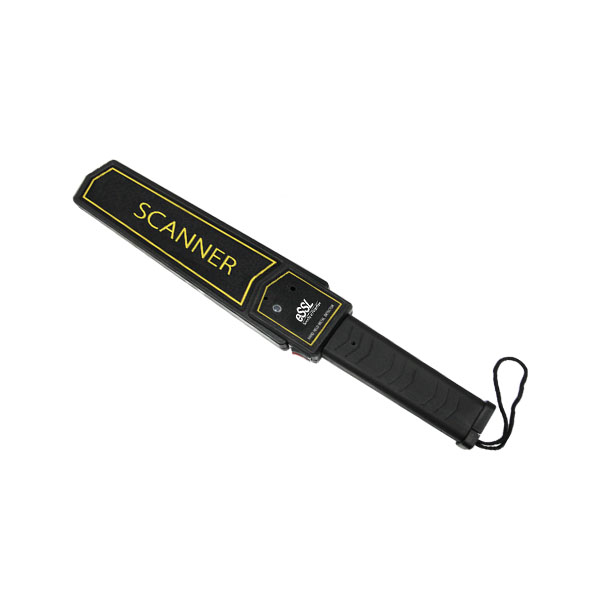A hand metal detector, also known as a handheld metal detector or a wand metal detector, is a compact and portable device used for the detection of metal objects. It is commonly employed in security settings, such as airports, courthouses, prisons, and events, to ensure the safety and security of individuals by detecting concealed metallic items.

| Features | |
|---|---|
| Dimension | 410(L) X 85(W) X 45(H) mm |
| Power Voltage (Optional) | Standard 9V Battery |
| Operating Voltage | 7V-9V |
| Operating Current | <50mA |
| Waterproof | IP31 |
The design of a hand metal detector typically consists of a handle with a grip and a sensor coil at the end. The sensor coil emits an electromagnetic field, and when it comes into proximity with a metallic object, it generates an audible and visual alert, indicating the presence of metal. The sensitivity of the detector can often be adjusted to detect different sizes and types of metal objects.
Hand metal detectors are highly effective in quickly scanning individuals for concealed weapons, such as knives, guns, or other metallic contraband. They are particularly useful in situations where a large number of people need to be screened efficiently and non-invasively. Security personnel can swiftly scan individuals by passing the handheld detector over their clothing and body, allowing for rapid identification of potential threats.
These devices are also valuable in archaeological applications, helping archaeologists locate buried metal artifacts without the need for extensive digging. By sweeping the detector over the ground, they can pinpoint the presence and approximate location of metal objects, aiding in the excavation process and preserving fragile artifacts.
Hand metal detectors are generally user-friendly, lightweight, and easy to operate. They often feature ergonomic designs for comfortable handling during prolonged use. Some models may include additional features like adjustable sensitivity, visual displays, and vibration alerts to accommodate different operational preferences or environments with noise restrictions.